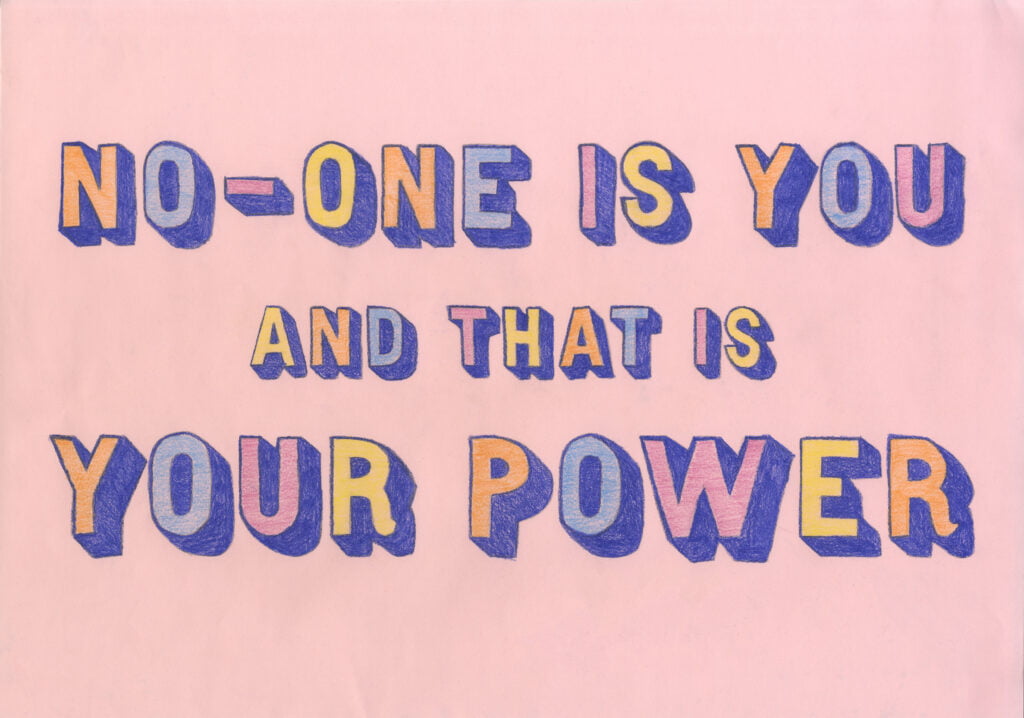
Kirsty Ramsay Hogan, ‘No-one is you’
How do social and physical barriers affect our sense of self and our understanding of places?
Lily Lavorato’s work explores both real and imagined geographies. Her installation, ‘Arse End of Nowhere’, is rooted in a specific place and culture. Yet her question about barriers is one that all the artists in a new online exhibition, ‘Possible All Along’ seek to address in some way.
That the artists are all disabled adds extra resonance to their explorations of moving through spaces – public and private, urban and rural. They translate their experiences of encountering barriers, which sometimes inhibit their movement, into their work.
‘Possible All Along’ aims to make disabled artists’ work more visible. It’s a platform for disabled artists in Leeds, a snapshot from a particular time and place, featuring 13 artists. At a time when everyone’s movement has been suddenly curtailed, there may be something to learn from a group of artists who are used to living with restrictions, whether due to the inaccessible environment or the effects of other people’s prejudices.
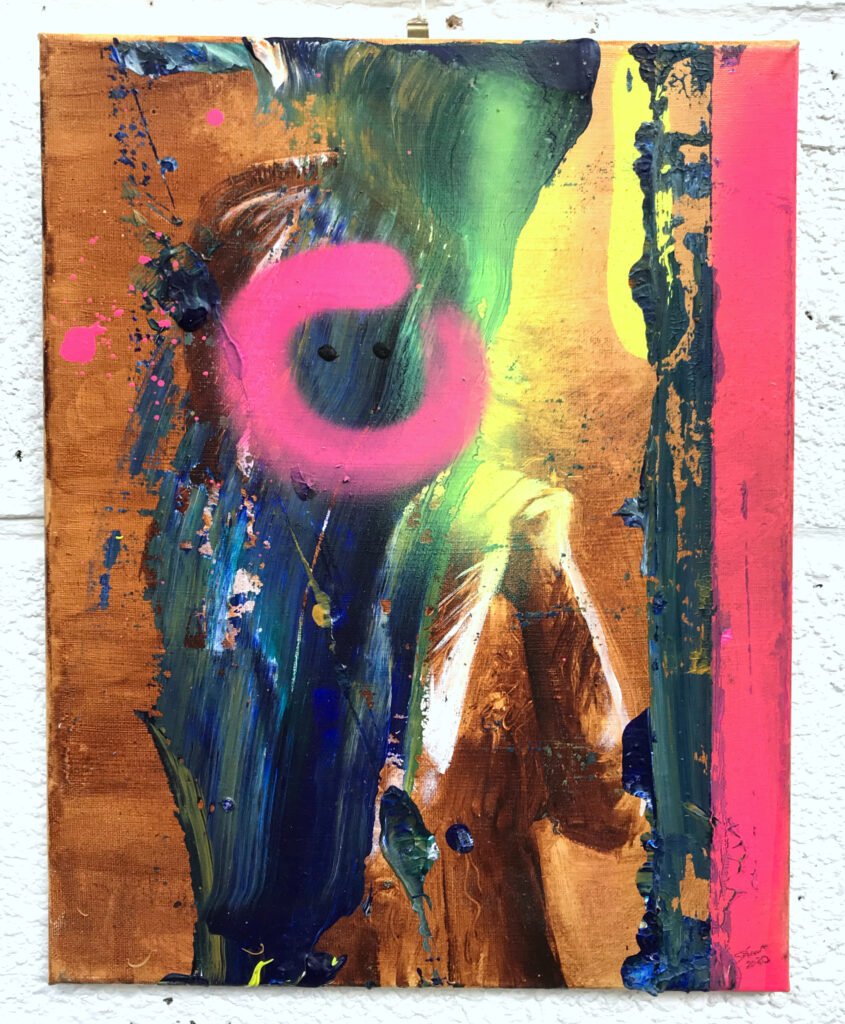
Sarah Francis, ‘2020’
When I was planning the exhibition I was aware that it might be criticised as being reductive, of lumping disabled artists together for the sake of it, and prioritising their biographies over their art. I’m familiar with the arguments about labelling and ghettoising disabled artists, and I understand people’s ambivalence. Labels can be constraining, so some disabled artists don’t want to be open for fear of being restricted. Many steer clear of projects aimed at disabled artists. So I wanted to avoid this by making sure that ‘Possible All Along’ focused on art of a high standard and that it was relevant and meaningful in the current circumstances.
The title flags up disabled artists’ mixed feelings about the upheavals of 2020. Disabled people have been disproportionately affected by the pandemic in terms of health, isolation and financial problems. But there have also been changes that point to the possibilities of a more inclusive future, particularly in terms of delivering services and activities remotely. During the first lockdown, many arts organisations quickly took their performances and exhibitions online, something disabled people had been asking for for years. Having been told this was not feasible, it turns out that online engagement was actually possible – and perhaps had been all along.
The internet also offers opportunities for disabled artists to show their work widely, although it should not be the only option available. It would be great to experience the artworks in ‘Possible All Along’ in real life rather than just digitally, to get a better understanding of their impact. The exhibition would look fantastic in a physical venue. However, finding accessible venues for independent or artist-led exhibitions is inordinately difficult.
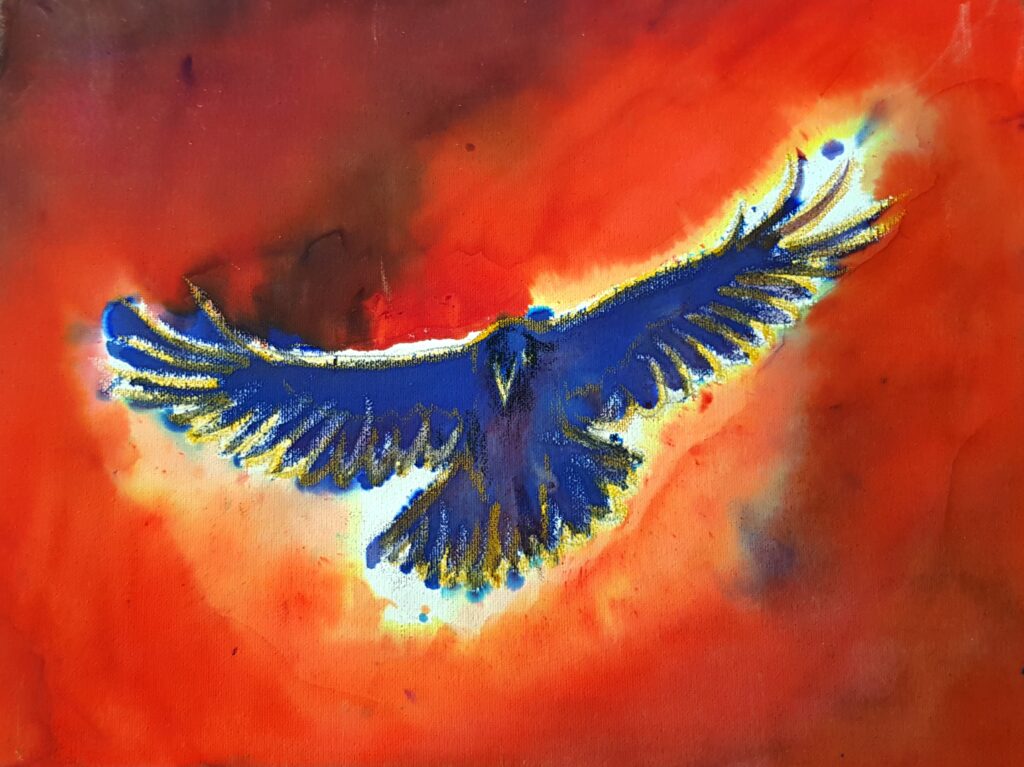
Si Denbigh, ‘Corvid 19’
All the work in ‘Possible All Along’ is from this year or last. Some of it was made during the pandemic. Several artists make specific reference to this period, for example, ‘Hand washing’ by Nicole Murmann, a reflection on new ways of living; ‘Corvid 19’, where Si Denbigh calls up a series of crows; ‘2020’ by Sarah Francis, which perhaps reflects the turbulence of the year.
Everyone’s relationships with private and public spaces have been upended this year. But these artists have been considering for some time the issues of having your movement interrupted. Ruthie Reynold’s series of concrete and scrap metal sculptures, ‘Awkward Architecture’, suggests the difficulties and discomfort that often accompany disabled people’s passage through urban landscapes.
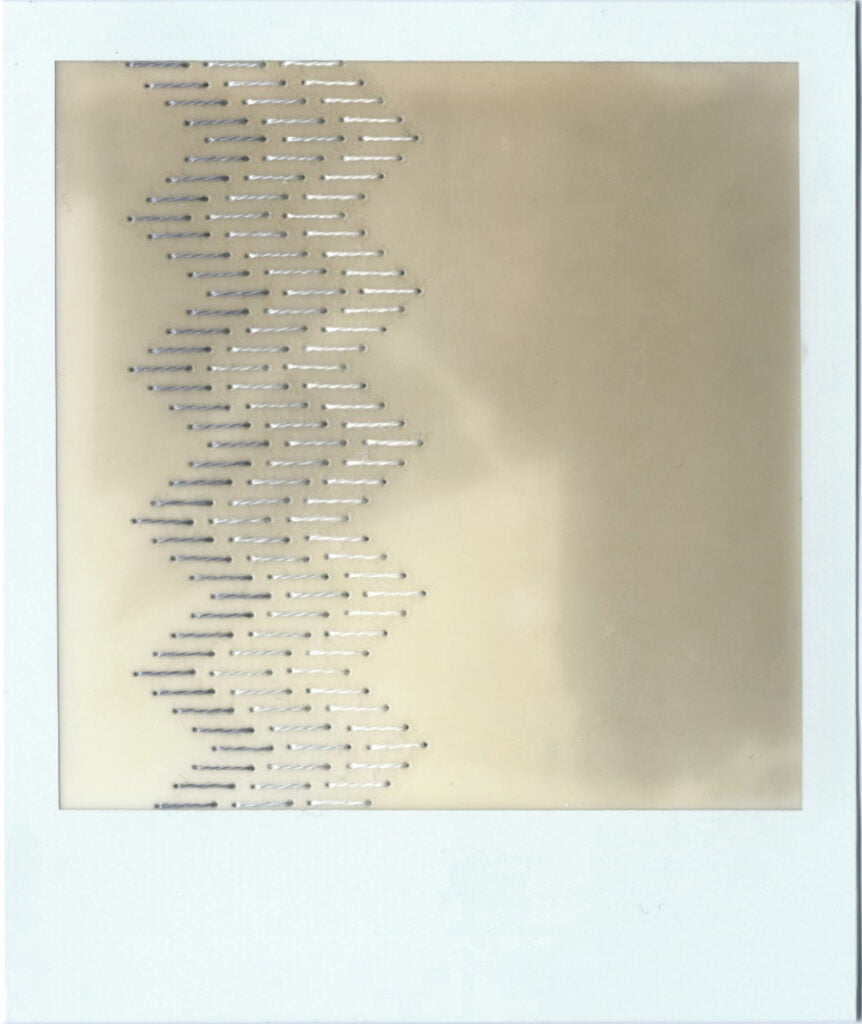
alabamathirteen, ‘The Climb’
alabamathirteen also draws on personal experience of navigating spaces as a disabled woman. Using traditional embroidery on photographs, her stitches pick their way steadily across shadowy landscapes, making geometric patterns as they go.
Connections with nature have brought solace to many throughout the pandemic, including disabled people. In ‘Finding Light’, Mindy Goose reclaims her creativity by studying the play of light and shade in photographs taken on woodland walks. Meanwhile, Vickie Orton has turned an instance of being denied the chance to take part in outdoor activity into a series of bark-covered artist’s books.
£3 Money
Other artists incorporate text into their work to provoke a reaction or to confront ableist attitudes. Stephen Harvey, for instance, tackles complex issues around disabled people’s right to live independently. ‘£3 Money’ communicates his frustration in a series of banners.
I didn’t ask that artists address disability issues when I invited them to take part in the exhibition. It is interesting that so many of them have done so, with explicitly autobiographical work, or pieces which are less direct but clearly drawn from their experiences of disability.
‘Possible All Along’ gives disabled artists the opportunity to collectively stake their claim on the cultural landscape. The timing is crucial, as the pandemic has deepened inequalities across society. In the arts, disabled artists and disability arts organisations have come together to sound the alarm that they are becoming further sidelined. #WeShallNotBeRemoved calls for an inclusive post-COVID recovery in which disabled artists are recognised and fully involved.
Recognition cannot happen without visibility. ‘Possible All Along’ contributes to raising the profile of disabled artists. And, like disabled artists and audiences across the country, the exhibition looks forward to the possibilities ahead, to making the arts more accessible, more inclusive and more equal.
The exhibition can be viewed here.
For more information: [email protected]
Filed under: Art & Photography
Tagged with: accessibility, accessible, art, artist, covid, disabled, exhibition, leeds, online, pandemic, possible
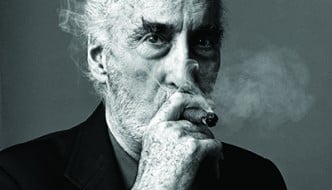


Comments